VPNs have a lot of benefits. First of all, it makes the geographic location of your computer appear in some other place than where you actually are, hence, giving you privacy. But what if you want to have privacy all the time, in your home, at your office/workplace, for you and your co-workers? The easiest and most obvious way to get privacy for all of the above-mentioned reasons is by installing a VPN on your router. With a VPN client on your router, anyone using your local network to browse the web or access any other service will automatically use the VPN as it will be running all day.
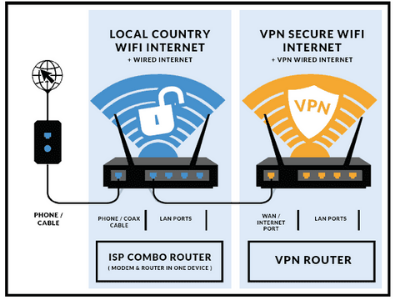 Most routers support the VPN client as most of the offices use this to make their clients feel as if they are using a single network in a place when the truth is that someone is using the same at a remote place via the internet.
Most routers support the VPN client as most of the offices use this to make their clients feel as if they are using a single network in a place when the truth is that someone is using the same at a remote place via the internet.
Steps to install VPN on Router
Below are some steps that you need to follow to install the VPN on your router in an easy way.
1. First, log into your Router
First, you have to log in to your router and change the settings. This will help you to make the required changes that you need to install the VPN.
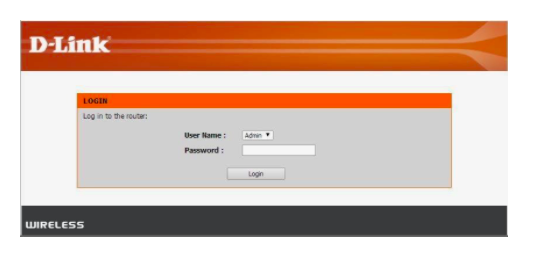 For most of the routers, first, you have to enter its IP address into your search bar and login.
For most of the routers, first, you have to enter its IP address into your search bar and login.
2. Configure the Router
After you log into your router, you need to configure it. The steps that you take to configure your router depend entirely on its firmware.
Some routers have in-built VPN functionality and in some, you need to reconfigure the settings to enable the VPN.
Steps you need to follow to configure the router are
- Click on the start menu and type the command prompt and click enter.
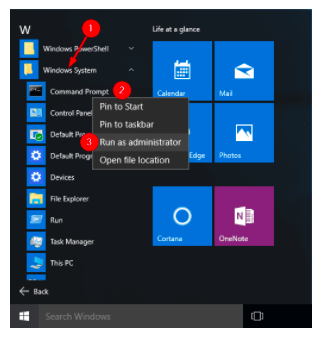
- Then type ipconfig and click enter again. Your router’s IP address will be listed below in the image.
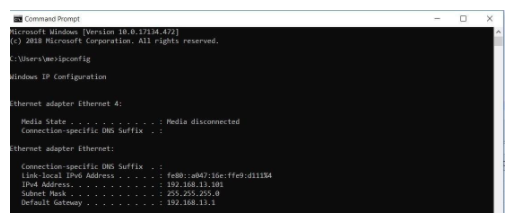
- Then open your browser and type your router’s IP address as the URL. That will give you a login prompt.
- Get to router’s administrator functions and configure.
3. Set the VPN Parameters
A router usually acts as a VPN client and connects to the VPN server. It then encrypts all the communication between the server and router. When you set up a VPN on the router, you need to change some parameters. Below are the steps to set a VPN connection on a router running the DD-WRT firmware:
- First, enter the DD-WRT control panel
- Click on services and then VPN.
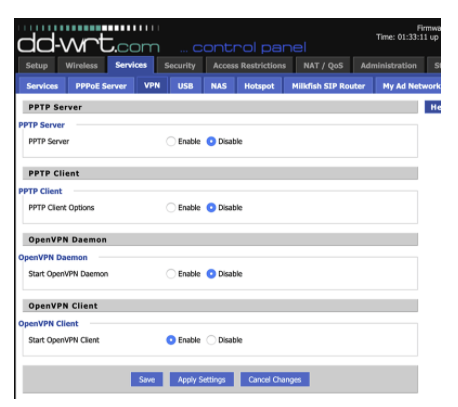
- Choose the type of VPN connection you want- PPTP Client or OpenVPN Client.
- If you choose PPTP Client then enter the parameters that are asked to you in the dialog box.
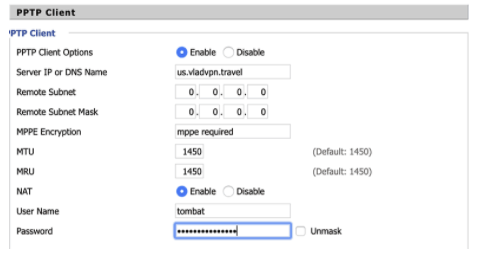
- For OpenVPN Client, enter the parameters that are important and all others will be automatically done.
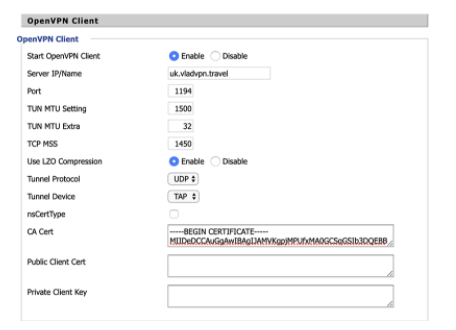
Save the changes and you have set the VPN parameters.
4. Test the Router
Once you have completed the configuration process, test your router to check whether the connection is coming or not. You can log in to your router anytime and change your settings too.
How VPN on Router works?
A VPN basically creates a secure and encrypted connection between the device it is on and the internet. It gathers all the requests of the devices to access the internet and then the VPN passes all the requests through the encrypted passage to give them privacy.
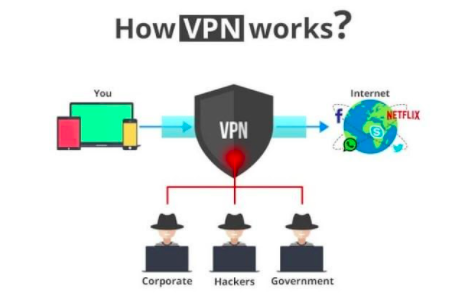 It is easy to understand for the device which has a user interface. Anything you want to do on the device, you go through the passage. But what happens if you use a device with no user interface, like a router? Once you set up the VPN on your router, every device connected to the router, be it your PC, laptop or any entertainment device will have all the information gone through the passage.
It is easy to understand for the device which has a user interface. Anything you want to do on the device, you go through the passage. But what happens if you use a device with no user interface, like a router? Once you set up the VPN on your router, every device connected to the router, be it your PC, laptop or any entertainment device will have all the information gone through the passage.
What are the pros and cons of installing a VPN on the Router?
Before installing the VPN on your router, go through all the pros and cons of doing so and decide whether it is appropriate for you or not.
PROS
- Always secure and private- with a VPN on your router, you will always be safe and secure and you can browse or watch any channel as you wish without forgetting to secure yourself.
- Gives home security- with the VPN installed on your router, you can always provide security and privacy to yourself and to the people who visit your home and ask for your WIFI password.
- You can connect more devices- you can connect a greater number of devices to the router. There are some VPNs that allow upto 6 devices. It becomes easier for the offices to operate and work securely.
CONS
- Managing the VPN settings becomes harder- as your router does not have its own user interface, it will become harder to manage the VPN settings in it. You will have to take the help of another device to change the settings.
- It blocks some incoming connections- VPN is designed to block incoming unauthorized connections. You will find it easy operating a VPN with your laptop than with your router.
- Traffic between devices and router may not be secure- as the encryption and security occur in the router, the traffic between the router and the device is not encrypted.
Conclusion
Many people believe the myth that it takes a lot of work and time to install a VPN on the router but it is much easier than you think it is. These days, privacy and security are the main concerns to look upon. Everyone wants to be secure with the transferring of money, in their houses, while watching movies or while streaming. VPNs basically encrypt all your data you are watching and keeps your privacy intact.
We have mentioned all the steps that you can follow to set up/ install a VPN on your router. Installing a VPN on the router will secure all your data and you can connect to your router from any device. So, even if you watch your favorite channel or play your favorite game on any device which is connected to your VPN router, you are safe and secure. Enjoy streaming and gaming!
